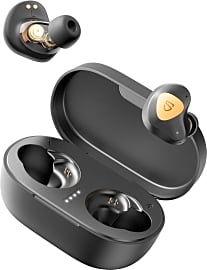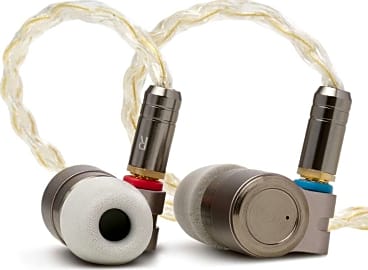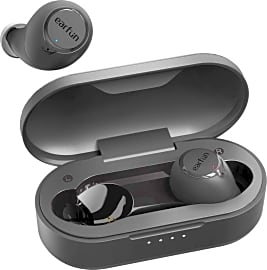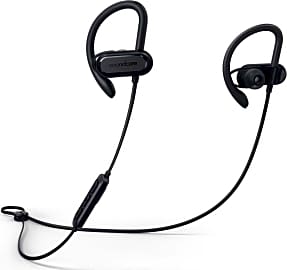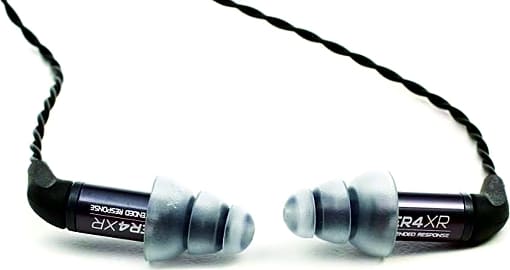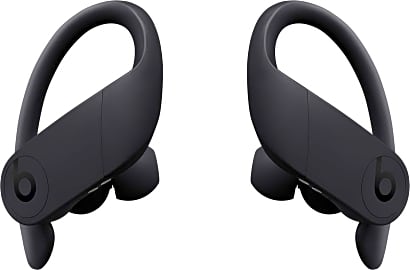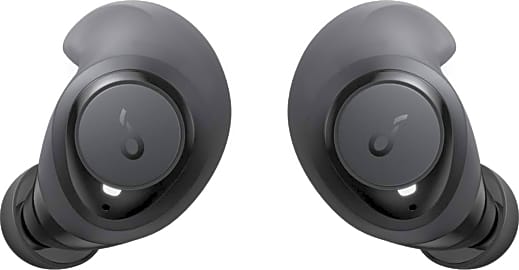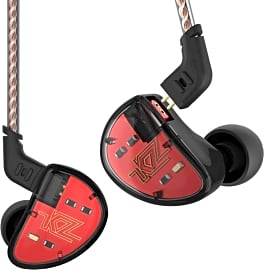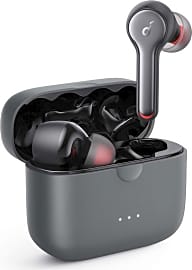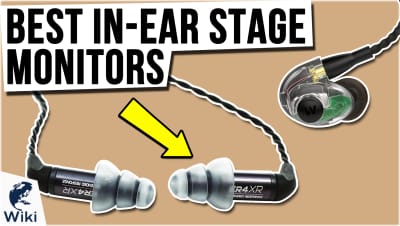The 10 Best Earbuds For Bass

This wiki has been updated 37 times since it was first published in March of 2016. If you want to pump up the bass, yet still hear everything clearly, it helps to have a pair of earbuds designed for that purpose, like any of these from our comprehensive selection. They come at high and low prices and in both wired and wireless versions, most are factory tuned for a booming low end, and they should all respond well to customization with a graphic equalizer. When users buy our independently chosen editorial choices, we may earn commissions to help fund the Wiki.
Editor's Notes
January 21, 2021:
If you're really into bass and also want peak passive isolation, the Etymotic Research ER4XR might be worth the large investment, but if not, the Tin HiFi T3 would make a stylish and effective alternative. The KZ AS10 is similarly affordable, and uses more balanced armature drivers than anything else in its price range, but doesn't look particularly sleek.
For wireless connections, the Anker Soundcore Liberty Air 2 are still a good choice - if you get a non-defective pair. Luckily, Anker is a pretty reputable company, and the majority of users did end up happy with the Liberty Air 2, although the same can't necessarily be said of their Pro 2 successors. The Beats Powerbeats Pro are a high-end choice that responds well to customization, while the EarFun Free, SoundPeats Truengine 3 SE, and Jabra Elite Active 75t are in the more compact style than both of those, and represent the low, middle and upper range of performance for bass-heavy music like EDM and hip-hop.
December 14, 2019:
Because of the tight seal they generally form with your ears, earbuds are excellent tools for pumping massive levels of bass into your face. And with constant advancement in powerful and microscopic technology, there are quite a few reasonably priced options out there. Beginning with some standard wired models, we tend to gravitate toward in-ear stage monitors when looking for a high-quality listening experience. The TIN HiFi T3 Premium and KZ AS10 both definitely provide that, and they're not only clean-sounding but also durable and consistent enough for use while performing on stage. Alternately, the Beats urBeats3 aren't meant for performance use, but are a great-sounding pair with booming bass.
Of course, there are more wireless options available today then ever before. The Anker Soundcore Spirit X are about as inexpensive as they come, though they are tethered by a short cable that rests behind the wearer's neck. The JBL Under Armour Flash come pre-tuned with a powerful low end, as do the EarFun Free, and they're both so compact you'll hardly notice you're wearing them. On the other hand, the Beats Powerbeats Pro and JBL Endurance Peak use an ear-hook design, so while they're somewhat bulky, they're quite comfortable and stay in place well, which makes them great for exercising. The Bose SoundSport Free are especially interesting because of their open-back design, which makes them sound much less cramped than most others, but at the cost of isolation -- they really don't block much sound at all. But in terms of price-to-performance ratio, it's hard to top the Anker Soundcore Liberty Air 2, which sound amazing, produce plenty of bass, and are quite stylish, all at a reasonable price.
Also, for what it's worth, many headphones can see a significant increase in bass output with the use of a graphic equalizer, although many exhibit distortion and noise or can even be damaged when their sound profile starts getting altered. For that reason, we took overall accuracy heavily into account while selecting these 10 best choices.
Special Honors
Audeze In-Ears These guys are renowned for their planar magnetic cans, and the iSine and LCDi lines deliver the powerful technology in remarkably small packages. They're incredibly expensive and require a dedicated amplifier -- as in, you can't generally just plug them into your phone -- but they are just about the richest and best-sounding earbuds on the market. audeze.com
The Benefits And Compromises Of Earbud Form Factor
The inner-ear design of earbuds does filter out some outside noise, but on this mark they are less effective than their over-the-ear and on-ear alternatives.
While their portable design originated with hearing aids, modern earbuds are arguably more popular than the standard headphones that preceded them on the market.
As earbuds grow in popularity, consumers continue to demand more from their tiny form factor, including an improved bass response. A number of manufacturers have stepped up to meet this challenge.
While well-suited for on-the-go audio enjoyment, earbuds do have drawbacks.
Because of their limited size, they will never compete with similarly priced full-size headphones when it comes to sound quality. The miniaturization of components adds a premium to earbuds, and if you're looking for the highest quality bass response at the most affordable price, headphones are likely the better option.
Not to be confused with the high-end in-ear monitors used by professional musicians both in the studio and during live events, modern earbuds are primarily a consumer product. While in-ear monitors are typically custom fitted to the shape of the user's ear canal, earbuds typically take a one-size-fits-all approach, or include a selection of rubberized tips of varying sizes for customization at home.
The inner-ear design of earbuds does filter out some outside noise, but on this mark they are less effective than their over-the-ear and on-ear alternatives. Though modern earbuds do effectively seal off the ear, that technology doesn't exclude outside noise as well as larger headphones.
But that is where the disadvantages end. For many people earbuds are more comfortable to wear over long periods, and they are much more likely to stay put while walking and running than headphones, making them the best choice for exercise. Bluetooth technology has added yet another level of portability to earbuds, which now can operate without the added bulk of wires.
Additionally, developments in earbud technology mean frequency response has improved at all levels, including bass. The sound quality of earbuds is as good as it has ever been.
Your Brain Loves Bass
There's a reason you seek earphones that emphasize bass.
The first sounds a fetus absorbs after developing hearing are in this range, and that early exposure, scientists speculate, makes all the difference.
Bass sounds represent the lowest part of the musical pitch range, extending from 32 to 512 Hz. Researchers have discovered these low frequency sounds touch humans on a primal level. The first sounds a fetus absorbs after developing hearing are in this range, and that early exposure, scientists speculate, makes all the difference. Those early sounds include the sound of both the mother's heart and voice.
This is why bass beats are a common component of music across the cultures and genres of the world, scientists have theorized.
Bass sounds even spark changes in adrenaline levels and heart rate among humans in the right setting, which may be why that one killer workout track is so effective.
In songs where the beat is carried by instruments in the bass range, nearly all humans are more likely to respond because we are all significantly more sensitive to changes in bass sounds than to those in other ranges.
As music and the technology to reproduce it have evolved, the use of bass sounds has increased. This is most apparent in the hip-hop genre, which fueled the 1990s and early-2000s subwoofer boom, during which custom car audio systems centered around bass reproduction and emphasis were popular. Today, subwoofers are ubiquitous in music clubs and concert venues.
A Brief History Of Earbuds For Bass
The first effective headphones were made in inventor Nathaniel Baldwin's kitchen in 1910. Early headphones like Baldwin's borrowed design characteristics from telephone receivers, generally had poor sound quality, and were uncomfortable to wear.
Headphones were used primarily by telephone workers until 1919, when a particularly sensitive design manufactured by Brandes made them feasible for work in radio.
Early headphones like Baldwin's borrowed design characteristics from telephone receivers, generally had poor sound quality, and were uncomfortable to wear.
It wasn't until 1958 that a predecessor to modern audiophile headphones was brought to market by jazz musician John C. Koss. The headphones designed by Koss were the first to translate a stereo signal, with different sounds in the left and right channels.
While they share technology with early headphones, the smaller earbud design originated with hearing aids before becoming popular for use with the first portable transistor radios around 1960. The 3.5 mm audio plug used by most earbuds today is a product of this marriage with the transistor radio, first used in the Sony EFM-117J, released in 1964.
As portable music devices improved in audio quality with the popularization of FM radios, and later CD and MP3 players, consumers grew to appreciate the benefits of high-quality headphones and earbuds. A cultural icon, the Sony Walkman was at the center of this movement, starting in 1979 with a cassette player, and continuing into the 1990s with the Discman, which played CDs.
In the late 2000s, the popularity of both the Apple iPod and the bass-heavy hip-hop genre led manufacturers like Monster and later Beats by Dre to focus on producing listening devices with improved bass response. Demand for this sound profile in the earbud form factor came soon after, thanks to the popularity of Apple's own earbuds, which were included with each new iPod. Apple's earbuds were featured heavily in their marketing of the iPod, and, despite limited sound reproduction capabilities, they remain popular in their modern incarnation, the Apple Earpods.


